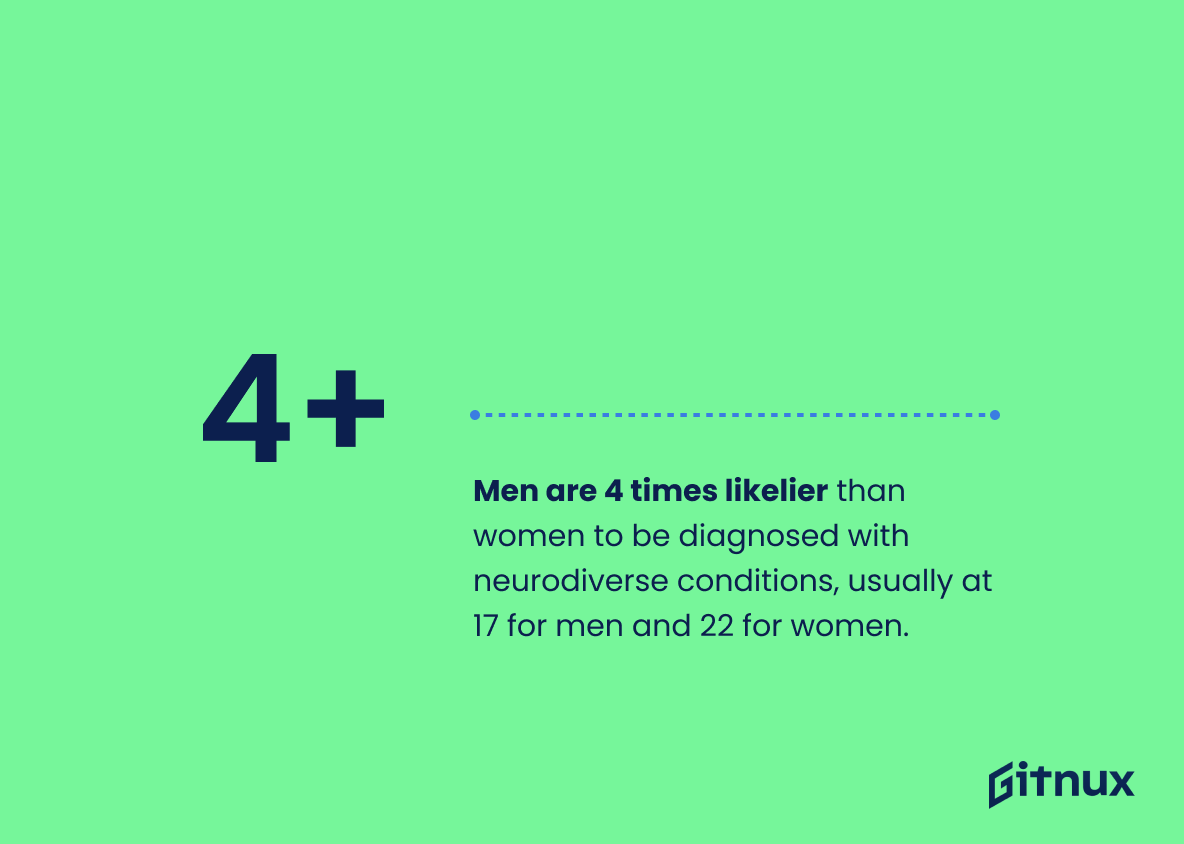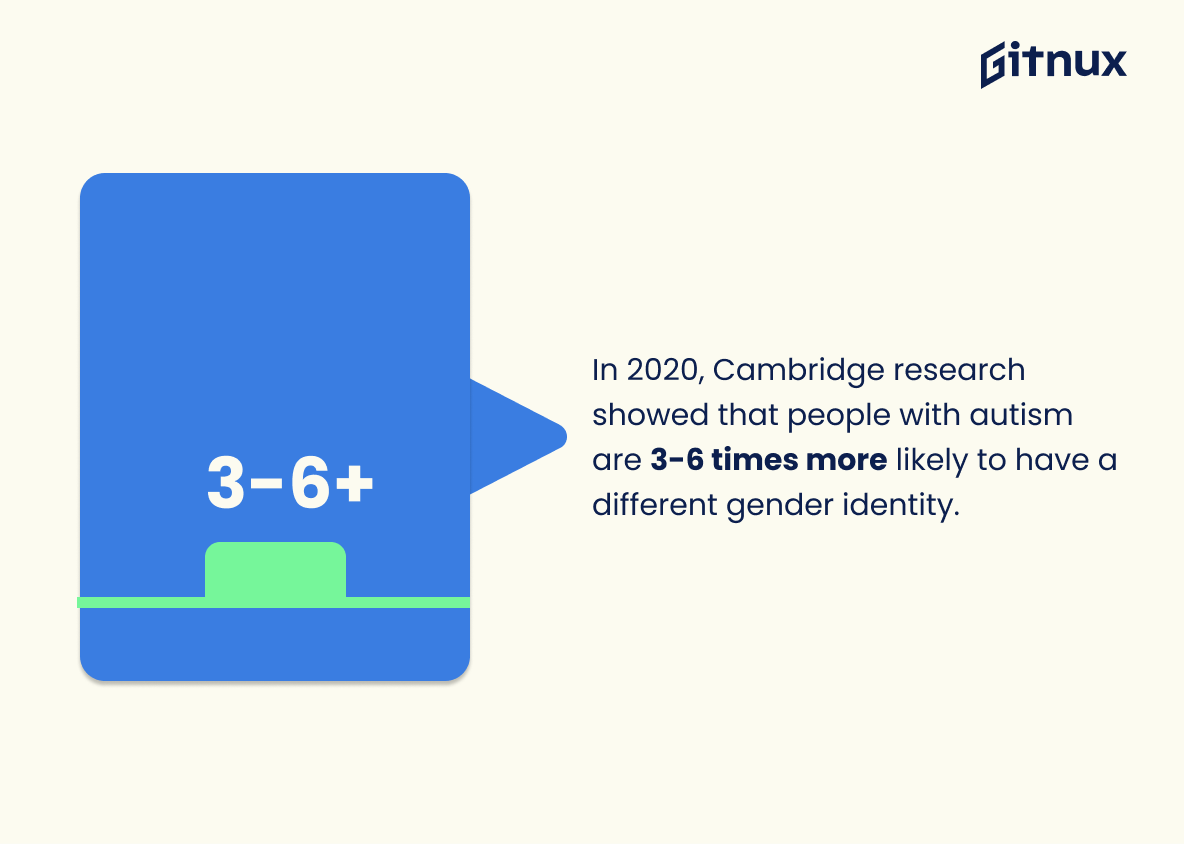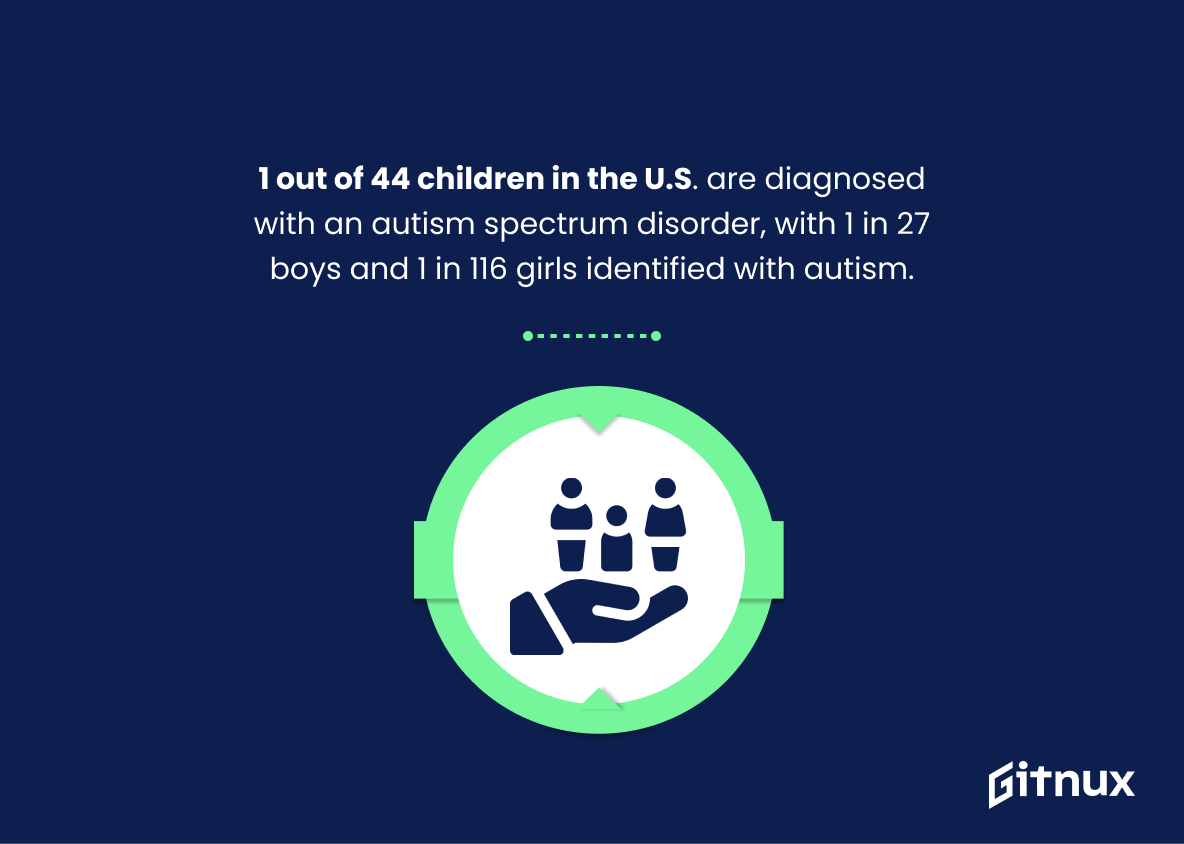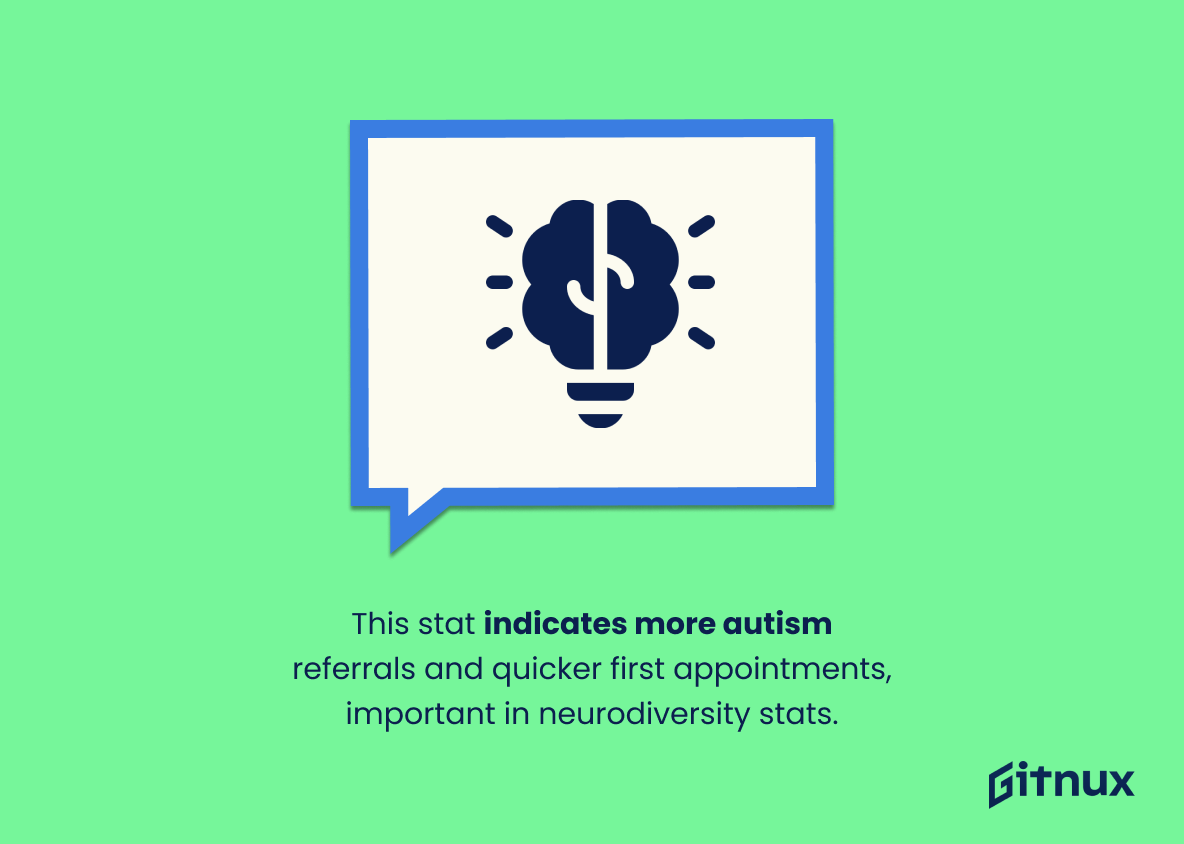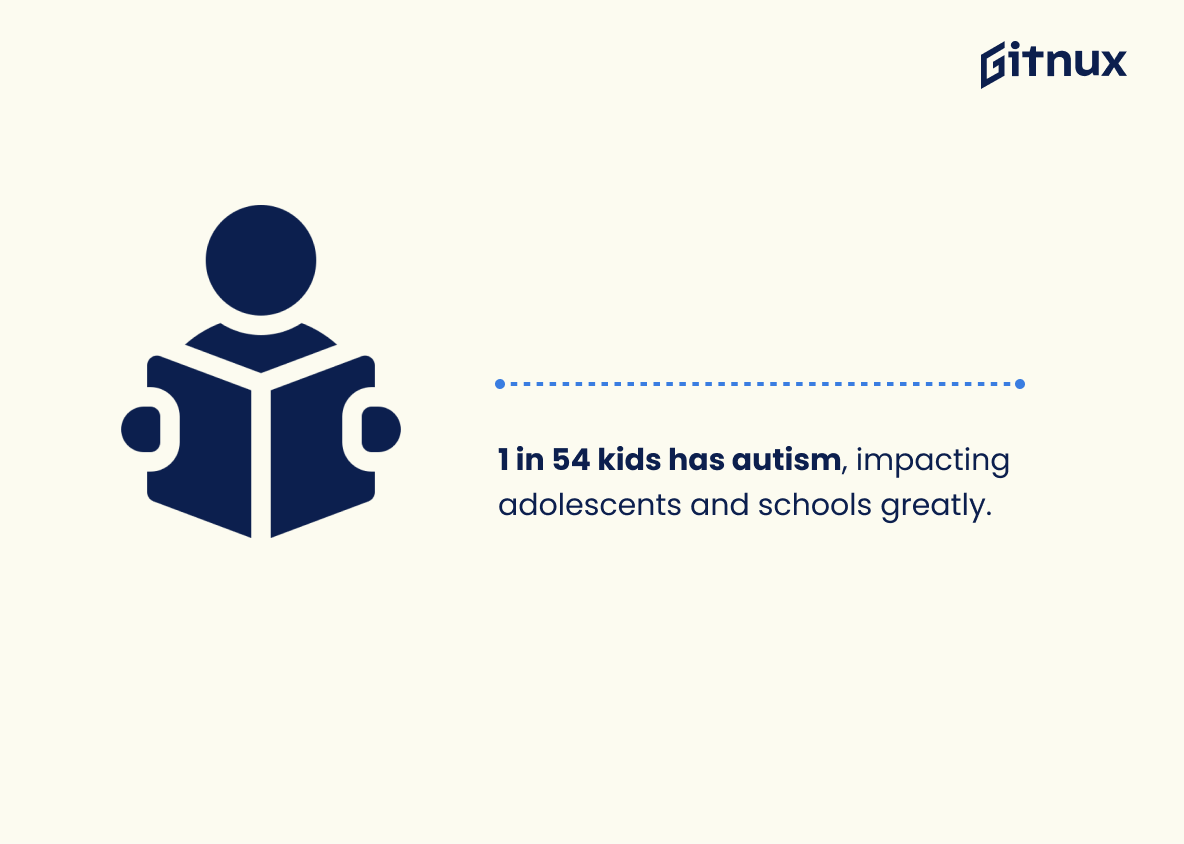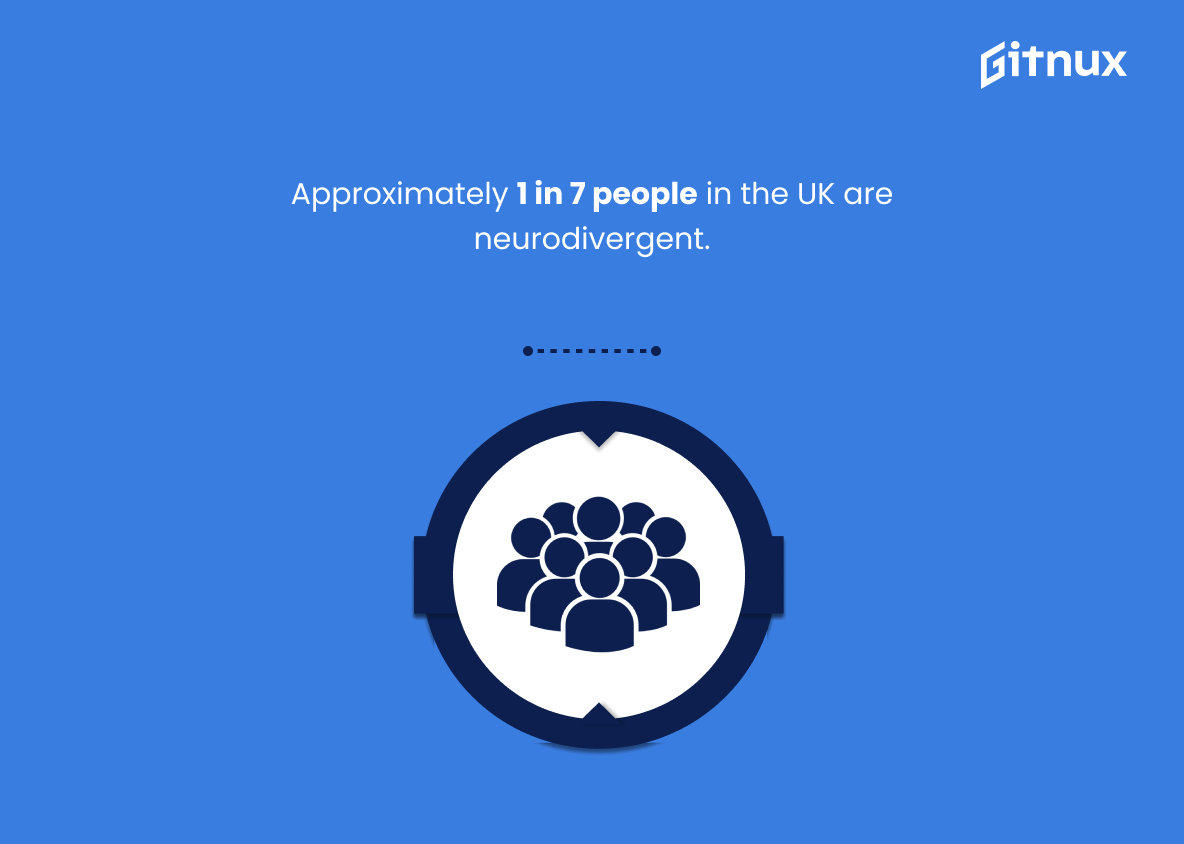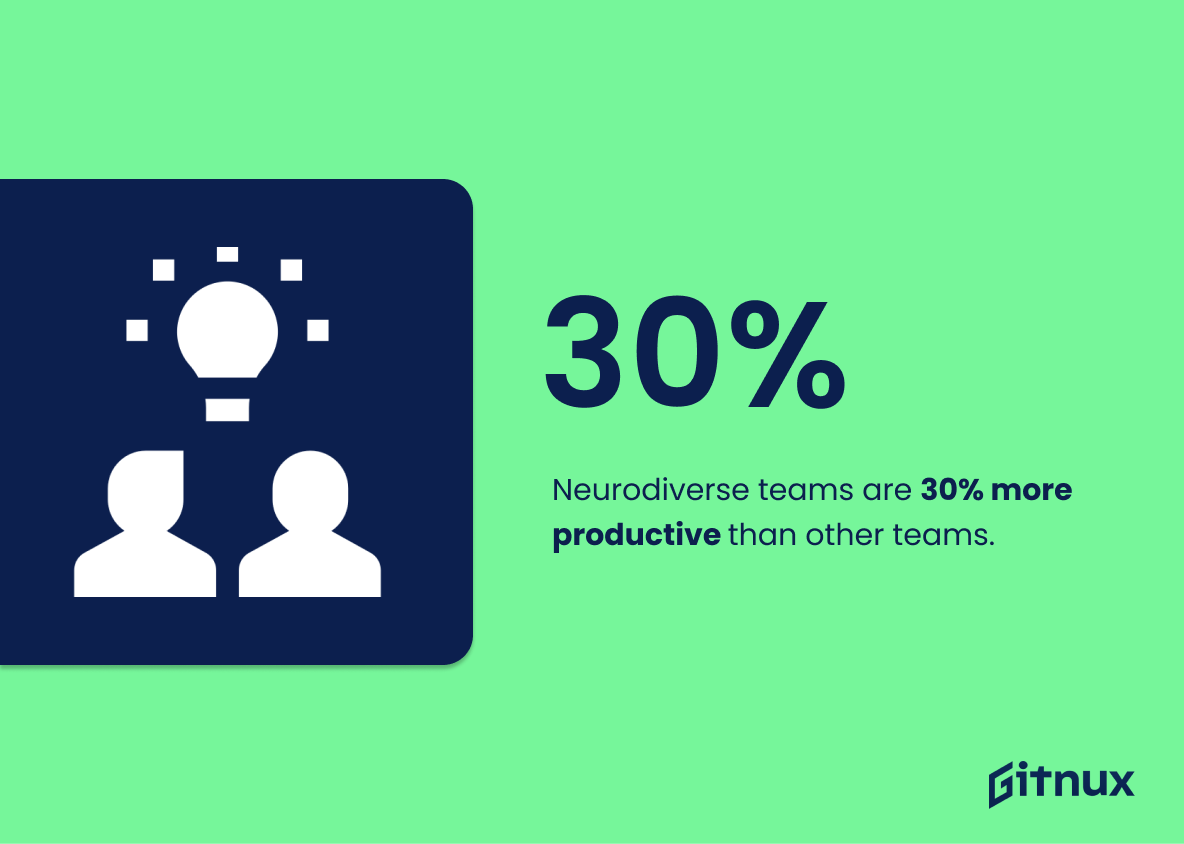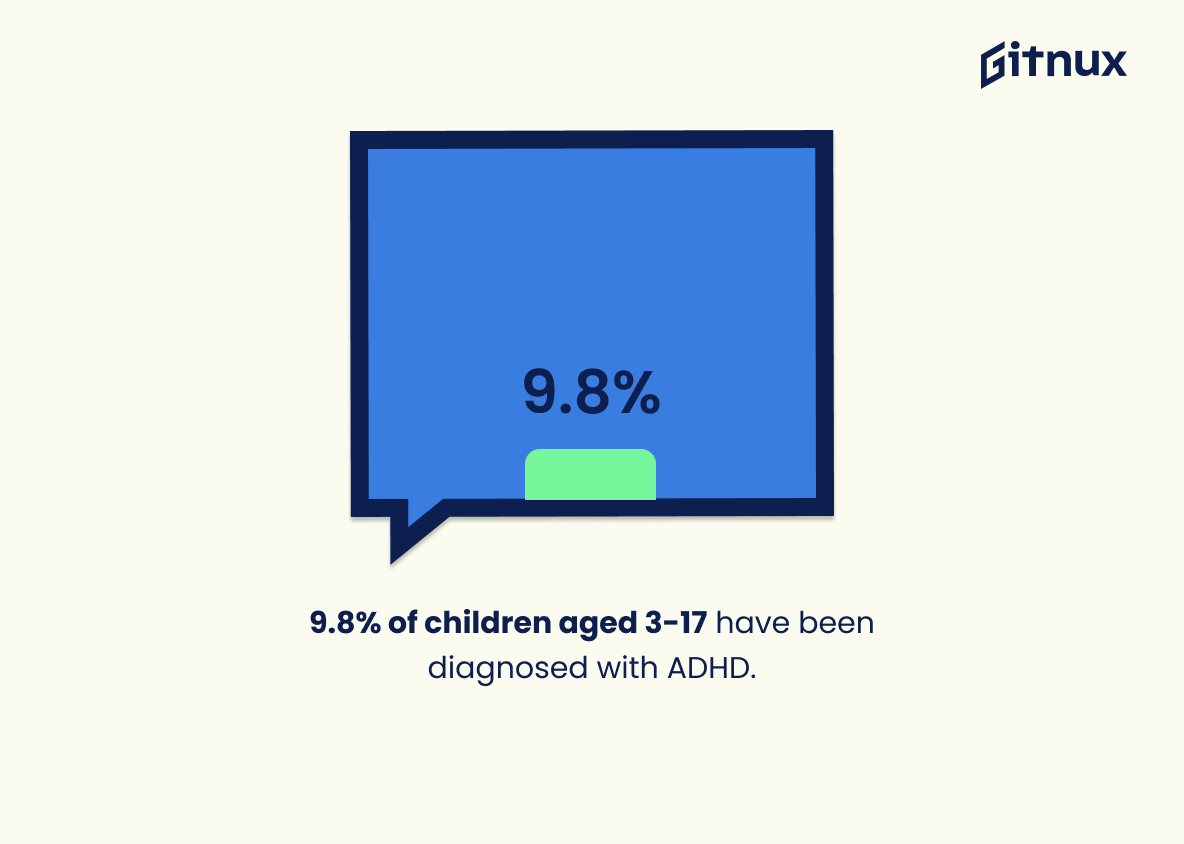Neurodiversity is an important concept that is gaining more and more attention in society. Neurodiversity is the idea that neurological differences, such as autism, ADHD, dyslexia, and Tourette syndrome, are a natural part of human diversity.
Neurodiversity is not a disorder or a disability, but rather a unique way of thinking and perceiving the world. As awareness of neurodiversity increases, it is important to understand the statistics and facts about neurodiversity in society. In this blog post, we will explore the prevalence of neurodiversity in society, the challenges faced by neurodiverse individuals, and the potential benefits of embracing neurodiversity.
Neurodiversity In Society Statistics: The Most Important Statistics
1 out of 44 children in the U.S. are diagnosed with an autism spectrum disorder, with 1 in 27 boys and 1 in 116 girls identified with autism.
Neurodiversity in Society Statistics: Statistics Overview
Around 15% of people in the UK are neurodivergent, with 700,000 autistic adults and 10% with dyslexia.
This statistic is important because it highlights the prevalence of neurodivergent in the UK and the need for society to recognize and support neurodiversity. It also highlights the need for more research and understanding of neurodivergent, as well as the need for more resources and support for those living with neurodivergent.
Approximately 1 in 2 people with ADHD have dyslexia, 9 in 10 people with Tourette’s have ADHD, 2 in 3 people with ADHD have autistic spectrum traits, and people with ADHD are 8-fold more likely to meet full criteria for an autistic spectrum diagnosis.
This statistic is important in the context of Neurodiversity in Society because it shows the prevalence of different neurodiverse conditions, and how they are often linked. This highlights the need for more research into the causes and treatments of these conditions, as well as better support for those living with them.
This statistic matters in the context of Neurodiversity in Society because it highlights the systemic barriers that neurodiverse people face in accessing employment opportunities. This statistic emphasizes the need for more inclusive policies and practices in the workplace, as well as the need for more education and awareness around Neurodiversity in order to create a more equitable and inclusive society.
Men are 4x more likely than women to be diagnosed with a neurodiverse condition, with an average age of diagnosis of 17 years for males and 22 years for females.
This statistic matters in the context of Neurodiversity in Society Statistics because it highlights the gender disparities in diagnosis and treatment of neurodiverse conditions. This statistic is important to consider when discussing the prevalence of neurodiverse conditions and the need for more research and resources to be allocated to better understanding and treating these conditions.
Research conducted by the University of Cambridge in 2020 found that individuals with autism are 3 to 6 times more likely to not identify as the sex they were assigned at birth.
This statistic matters in the context of Neurodiversity in Society because it highlights the importance of recognizing and respecting the gender identities of those with neurodiverse conditions, as well as the need to create an inclusive environment for them. It also emphasizes the need for further research into the experiences of neurodivergent individuals in order to better understand and support them.
1 out of 44 children in the U.S. are diagnosed with an autism spectrum disorder, with 1 in 27 boys and 1 in 116 girls identified with autism.
This statistic matters in the context of Neurodiversity in Society because it highlights the prevalence of autism spectrum disorder in the U.S. and the need for increased awareness, acceptance, and support for those living with autism.
The number of patients with an open referral for suspect autism increased by 31,400 between October 2021 and July 2022.
This statistic is important in the context of Neurodiversity in Society Statistics because it shows that more people are being referred for suspect autism and more people are receiving a first appointment within 13 weeks.
This indicates that the healthcare system is becoming more aware of neurodiverse conditions and is taking steps to provide better care for those affected.
1 out of every 54 kids is diagnosed with an autism spectrum disorder, representing a significant portion of the adolescent population and public school system. This statistic matters in the context of Neurodiversity in Society because it highlights the prevalence of autism spectrum disorder and the need for increased awareness and understanding of the disorder in order to support those affected. It also emphasizes the importance of creating an inclusive environment in public schools and other public spaces for those with autism spectrum disorder.
15-20% of the world’s population exhibits some form of neurodivergent, which is driven by both genetic and environmental factors.
This statistic matters in the context of Neurodiversity in Society because it highlights the prevalence of neurodivergent in the world and the need for greater understanding and acceptance of neurodivergent individuals in society.
Approximately 1 in 7 people in the UK are neurodivergent. This statistic is important because it highlights the prevalence of neurodivergent individuals in the UK and the need for greater support and understanding of their needs. Neurodivergent individuals often face additional challenges in terms of mental health and wellbeing, due to a lack of support and the need to ‘mask’ their differences. This statistic is a reminder that neurodiversity should be embraced and supported in society.
Neurodiverse teams are 30% more productive than other teams. This statistic is important because it shows that neurodiversity can be beneficial in the workplace. It demonstrates that neurodiverse teams can be more productive than other teams, which could lead to more organizations embracing neurodiversity in their workplaces. This could lead to more opportunities for neurodiverse individuals and could help to reduce the stigma surrounding neurodiversity.
1 in 5 children experience significant issues with learning due to underlying cognitive differences. This statistic is important as it highlights the prevalence of neurodiversity in society, and the need for greater understanding and support for those with learning disabilities.
Approximately half of people with ADHD also have dyslexia. This matters in the context of Neurodiversity in Society Statistics because it highlights the prevalence of multiple neurodevelopmental conditions, and the need for greater awareness and understanding of the co-occurrence of these conditions.
9.8% of children aged 3-17 have been diagnosed with ADHD.
This statistic is important in the context of Neurodiversity in Society because it highlights the prevalence of ADHD in children and emphasizes the need for better support and understanding of neurodivergent individuals in society.
70% of neurodivergent employees experience mental health issues, according to a study from Willis Towers Watson.
This statistic is important because it highlights the need for better employer support for neurodivergent employees, who are more likely to experience mental health issues than the general population. This is an important issue to address, as it can lead to improved mental health outcomes for neurodivergent individuals, as well as a more inclusive and supportive workplace environment.
Conclusion
Neurodiversity is a reality that is becoming increasingly recognized in society. The statistics presented in this blog post have shown that neurodiversity is a growing phenomenon, and that it is important to recognize and accommodate the needs of neurodiverse individuals in order to create a more inclusive and equitable society. Neurodiversity is an important part of our society, and it is essential to continue to work towards creating a more inclusive and equitable environment for all.
References
1 – https://www.local.gov.uk/lga-libdem-group/our-press-releases/neurodiversity
2 – https://adhdaware.org.uk/what-is-adhd/neurodiversity-and-other-conditions/#:~:text=It%20is%20thought%20that%20up,The%20remaining%20majority%20are%20neurotypical.&text=~8%25%20of%20people%20in%20the,are%20thought%20to%20have%20dyslexia.
3 – https://www.hrreview.co.uk/hr-news/diversity-news/most-neurodiverse-individuals-are-not-in-employment/141193#:~:text=Between%2015%2D20%20percent%20of,the%20National%20Library%20of%20Medicine.
4 – https://mydisabilityjobs.com/statistics/neurodiversity-in-the-workplace/
5 – https://tohealthltd.co.uk/2022/11/14/neurodiversity-and-gender-whats-the-link/
6 – https://www.autismspectrum.org.au/blog/gender-and-neuro-diversity
7 – https://www.autismspeaks.org/autism-statistics-asd
8 – https://digital.nhs.uk/data-and-information/publications/statistical/autism-statistics/september-2022-to-august-2023
9 – https://theconversation.com/too-many-neurodiverse-children-dont-have-a-full-diagnosis-heres-why-169038
10 – https://counseling.online.wfu.edu/blog/what-is-neurodiversity/
11 – https://dceg.cancer.gov/about/diversity-inclusion/inclusivity-minute/2022/neurodiversity
12 – https://www.healthassured.org/blog/neurodiversity/
13 – https://www.medecoded.com/sen-needs-and-an-education/
14 – https://mydisabilityjobs.com/statistics/neurodiversity-in-the-workplace/#neurodiversity-in-the-workplace
15 – https://commons.mtholyoke.edu/theaccessibletoolbox/teaching-strategies-student-perspectives/working-with-neurodiverse-students/supporting-successful-statistics-learning-for-neurodiverse-students/
16 – https://www.keg.com/news/how-universities-can-better-welcome-neurodiverse-students
17 – https://adhdaware.org.uk/what-is-adhd/neurodiversity-and-other-conditions/
18 – https://www.cdc.gov/ncbddd/adhd/data.html
19 – https://www.peoplemanagement.co.uk/article/1798074/majority-neurodivergent-employees-experiencing-mental-health-issues-study-finds#:~:text=Nearly%20three%2Dquarters%20(70%20per,calls%20for%20better%20employer%20support.
20 – https://www.ncbi.nlm.nih.gov/pmc/articles/PMC9630808/


